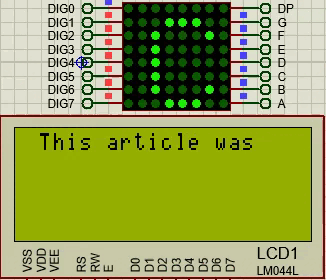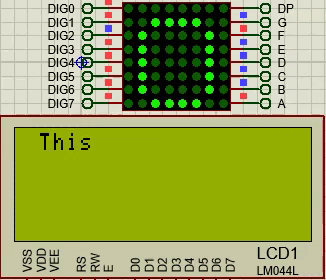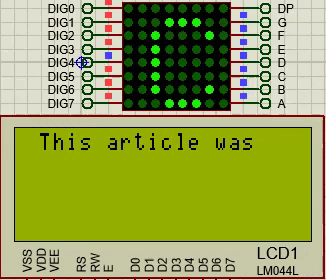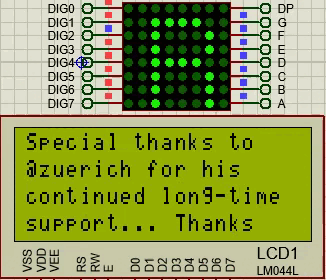Active filters EN/ES
Moving on from passive filters was an easy task due to their simplicity and small number of designs, we even used only one output parameter to design (Fc) and based on that we chose our RC circuit.
Dealing with active filters can be so complex that they left a big mark on me when I saw them for the first time in my university studies, those huge and complex circuits made me spend hours of analysis and leave many neurons in the process.
But don't panic, it doesn't have to be more complex than necessary and necessary doesn't have to be something worrisome 😉.
Pasar de los filtros pasivos fue una tarea fácil debido a su simplicidad y poca cantidad de diseños, incluso solo usamos un parámetro de salida para diseñar (Fc) y basados en el escogimos nuestro circuito RC.
Tratar con filtros activos puede ser tan complejos que dejaron una gran marca en mi cuando los vi por primera vez en mis estudios universitarios, aquellos enormes y complejos circuitos me hicieron gastar horas de análisis y dejar muchas neuronas en el proceso.
Pero no te asustes, no tiene por que ser más complejo de lo necesario y lo necesario no tiene por que ser algo preocupante 😉.

We are going to apply the theory of the pie and we will eat it in parts to make it easier, they are called active filters because now we will add an active component, it could be a transistor but that would be going too far back in time adding unnecessary complexity so we will start from operational amplifiers.
The design of the filter for Fc effects does not change with respect to what we saw in passive filters, the difference is that now when we add an operational amplifier other parameters will appear that we can calculate and that will allow us to create better filtering conditions.
Vamos a aplicar la teoría del pastel y lo comeremos por partes para hacerlo más fácil, se les denomina filtros activos porque ahora añadiremos un componente activo, podría ser un transistor pero eso sería ir muy atrás en el tiempo añadiendo complejidad innecesaria así que iniciaremos desde amplificadores operacionales.
El diseño del filtro para efectos de Fc no cambia respecto a lo que vimos en filtros pasivos, la diferencia es que ahora al añadir un amplificador operacional apareceran otros parametros que podemos calcular y que nos permitirán crear mejores condiciones de filtrado.

We can notice that although I am using the same RC circuits for the low pass and high pass filters the frequency response is not the same, the operational amplifier configuration is a voltage follower so it will affect the result less than the passive filters.
What I want to emphasize with these circuits is that the active filters can be analyzed in two stages, the first as a passive filter calculating the cutoff frequency and RC values according to the order of the filter and the second combining the passive filter with common operational amplifier configurations as appropriate.
That is why the variety of filters that can be designed is very wide and therefore seen from a general perspective could be complex, now let's see a filter with amplifier in non-inverting configuration.
Podemos notar que aunque estoy usando los mismos circuitos RC para los filtros pasa baja y pasa alta la respuesta en frecuencia no es la misma, la configuración del amplificador operacional es seguidor de voltaje por lo que es la que menos afectará el resultado respecto a los filtros pasivos.
Lo que quiero resaltar con estos circuitos es que los filtros activos se pueden analizar en dos etapas, la primera como un filtro pasivo calculando la frecuencia de corte y los valores RC segun el orden del filtro y la segunda combinando el filtro pasivo con las configuraciones comunes de los amplificadores operacionales segun convenga.
Es por ello que la variedad de filtros que se pueden diseñar es muy amplia y por lo tanto vista desde una perspectiva general pudiese resultar compleja, ahora veamos un filtro con amplificador en configuración no inversor.

Now we add R2 and R3 with which we can add a gain that is A=(R3/R2)+1 (this formula changes if you change the operational amplifier configuration, you must apply the corresponding formula for each configuration) and we can begin to notice the benefits of active filters, unlike a passive filter the load resistance does not affect the filter response, on the other hand you can filter small voltage signals and amplify them at the same time.
Another important parameter to take into account is the phase shift produced by the capacitor for each frequency value, so in addition to the gain with respect to the frequency we must also analyze the phase with respect to the frequency to know how much is the phase shift of our output signal.
Ahora añadimos R2 y R3 con los cuales podemos agregar una ganancia que es A=(R3/R2)+1 (esta fórmula cambia si se cambia la configuración del amplificador operacional, se debe aplicar la fórmula correspondiente para cada configuración) y ya podemos comenzar a notar los beneficios de los filtros activos, a diferencia de un filtro pasivo la resistencia de carga no afecta la respuesta del filtro, por otra parte se pueden filtrar señales de pequeño voltaje y amplificarlas al mismo tiempo.
Otro parámetro importante a tener en cuenta es el desfase producido por el capacitor para cada valor de frecuencia, así que además de la ganancia respecto a la frecuencia debemos también analizar la fase respecto a la frecuencia para saber cuánto es el desfase de nuestra señal de salida.

In addition to the amplifier configurations, active filters include different approximation techniques such as Butterworth, Chebyshev, elliptic, Bessel and others.
To make the topic more dynamic in the next article we will have a collection of active filters with the formulas to calculate them and the responses of each one.
Además de las configuraciones del amplificador los filtros activos incluyen distintas técnicas de aproximaciones como Butterworth, Chebyshev, elíptica, Bessel entre otras.
Para hacer el tema más dinámico en el próximo artículo tendremos una colección de filtros activos con las fórmulas para calcularlos y las respuestas de cada uno.












Thanks for your contribution to the STEMsocial community. Feel free to join us on discord to get to know the rest of us!
Please consider delegating to the @stemsocial account (85% of the curation rewards are returned).
Thanks for including @stemsocial as a beneficiary, which gives you stronger support.